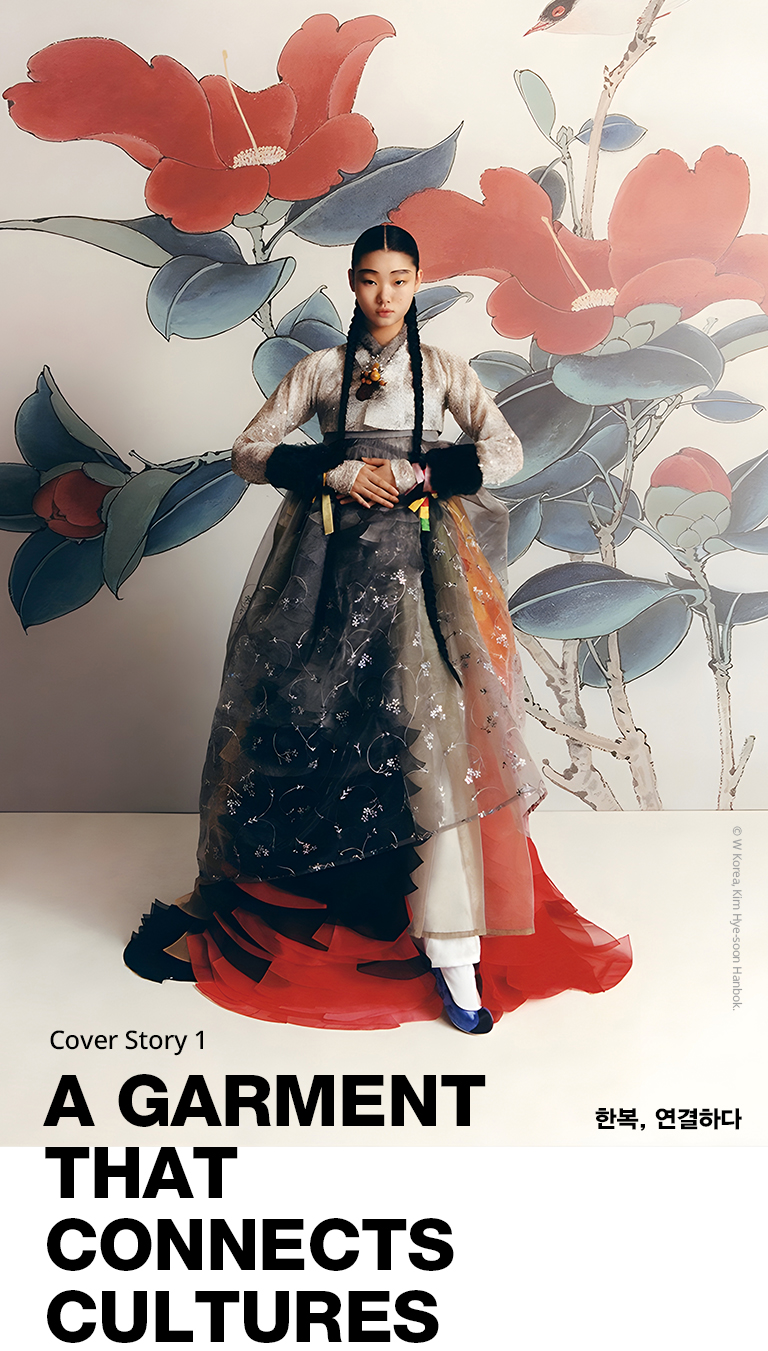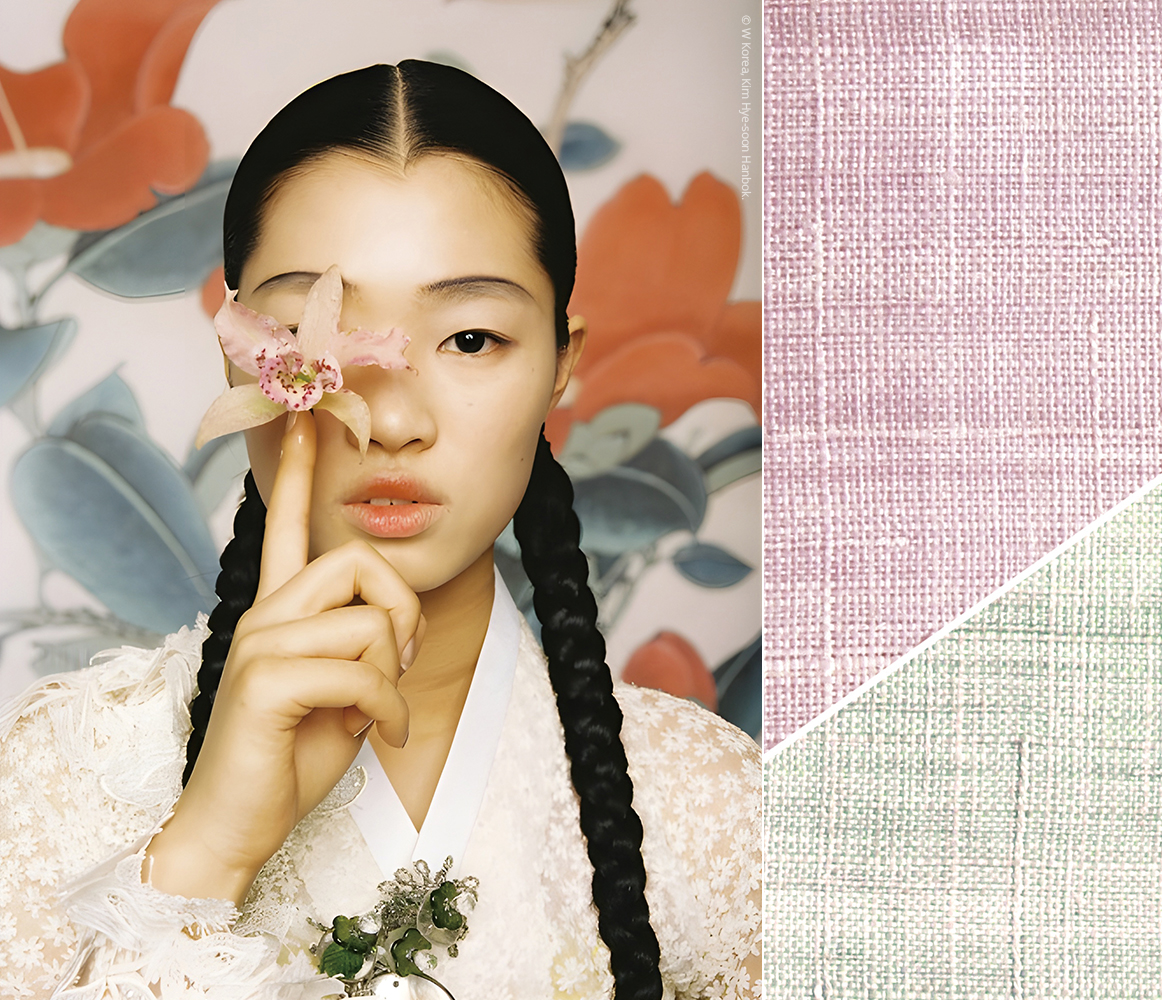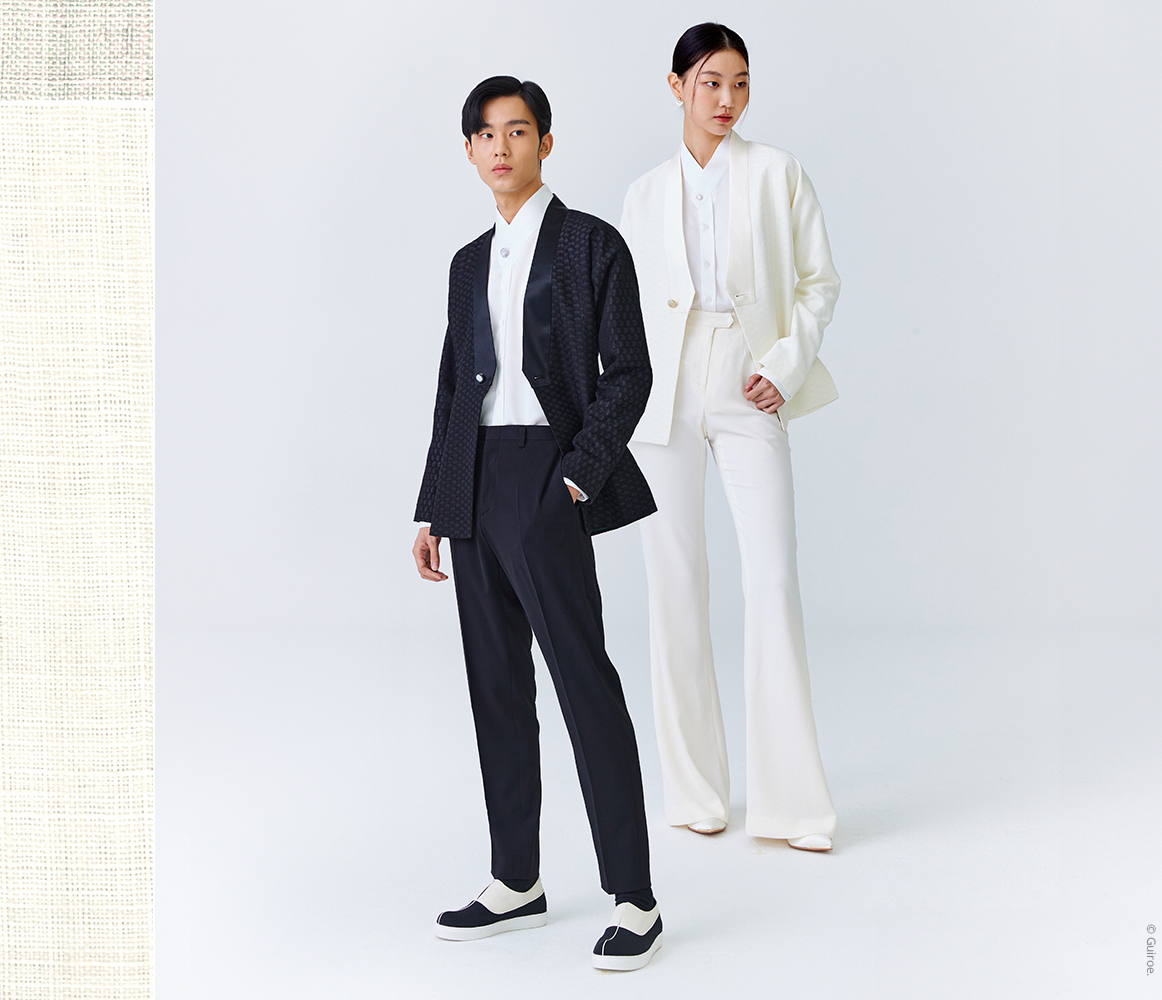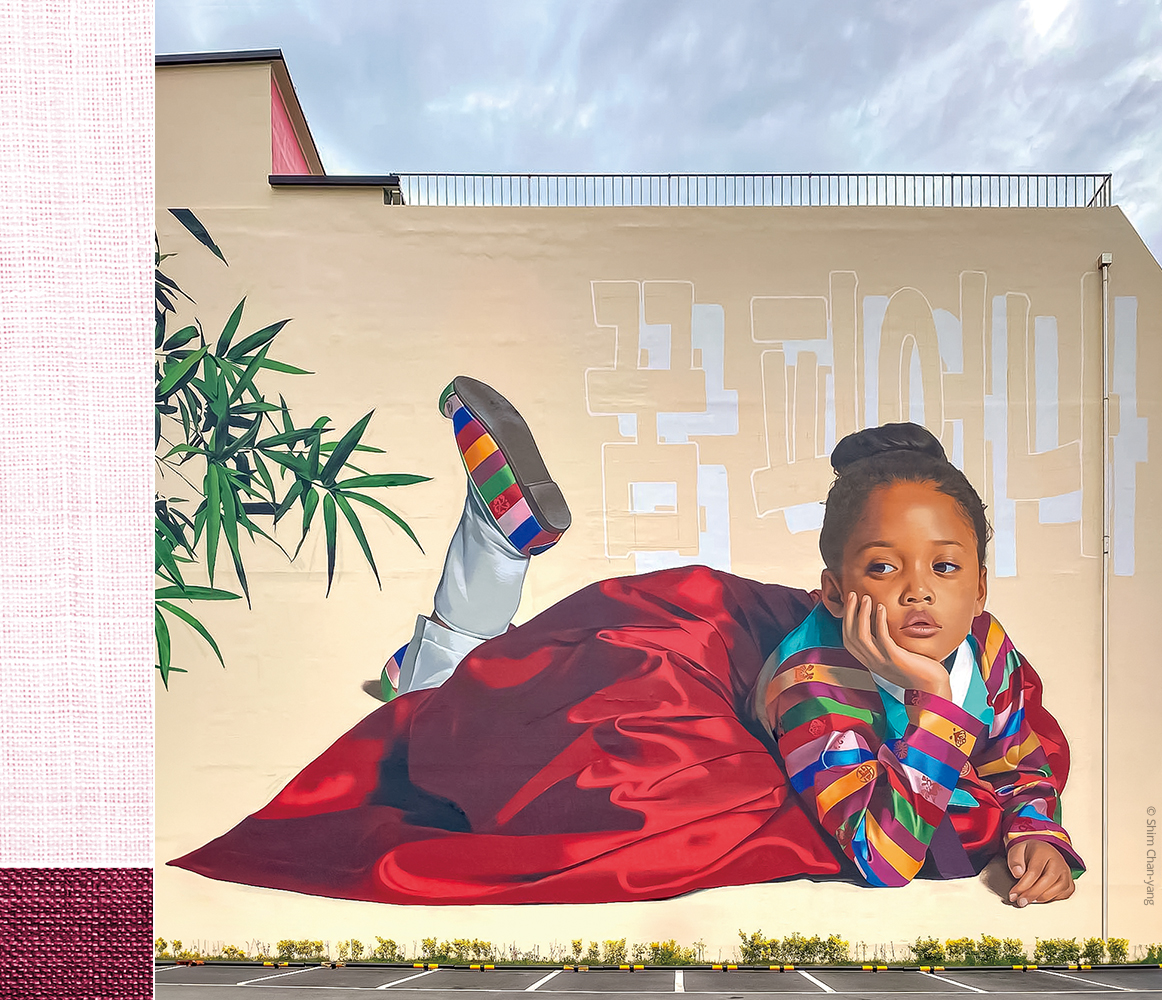
Hanbok, Korea’s traditional attire, evolves while preserving its essence, uniting eras, cultures and people. This article highlights three individuals shaping its role today.
한복은 한국의 전통 복식이다. 전통 복식이라고 하여, 과거에만 고착된 고루하고 답답하지 않다. 과거와 오늘을, 서양과 동양을, 인종과 국가를 연결하는 매개체로서 지킬 것은 지키고 변화할 것은 변화해 왔다. 자기 소명을 다해, 한복을 ‘연결하는 매체’로 만든 사람들을 소개한다.
Writer. Sung Ji Yeon

The unique beauty of Hanbok stems from centuries-old traditions, with its distinct, elegant curves and harmonious colors setting it apart from Western attire. Preserving such heritage requires both dedication and action—values that drive Kim Hye-soon’s lifelong commitment to Hanbok.
Kim became familiar with Hanbok during her childhood thanks to her uncle, an expert in the field. For more than 40 years now, she has been studying, restoring and making Hanbok. “Hanbok is a kind of game for me. One day, my uncle shared his hope that I would help carry on the tradition,” she recalls. Kim’s uncle was a kind of mentor whose words guided her in her efforts to preserve Hanbok. While preparing custom-made Hanbok for her clients, she studied clothing from around the world to gain a better understanding of Korean attire. She has also dedicated herself to restoring historical Hanbok garments.
During Kim’s search for the essence of Hanbok, she stumbled upon her own style as well. “I love natural things. My job, as I see it, is taking clothes that are as natural as possible and making them as beautiful as possible,” Kim says. Sure enough, her Hanbok embodies natural beauty, with flowing lines and hues that range from simple to gorgeously watercolor-like.
Kim’s talents have long been recognized both in Korea and other countries. She became the first Korean designer to hold a fashion show at the Metropolitan Museum of Art in New York, and she also put on a fashion show featuring Hanbok wedding dresses at the Louvre in Paris. Those are just two of more than 50 shows she has premiered in 25 cities around the world. In addition, she has collaborated with top brands and handled costumes for Korean television shows. In short, she has played a major role in bringing Korea and its Hanbok into the global limelight.
She has also been striving to share her knowledge with others who will carry on Korea’s traditions. She has published two books about restoring clothing called “Royal Attire and 600 Years of Jeogori” (jeogori is the upper half of a Hanbok outfit) and provided them to libraries and museums around the world. She has been a visiting professor in Korean fashion and has delivered lectures on Asian studies at graduate programs. She has donated her time to teaching Hanbok to high school students and to immigrant wives.
So, what inspired Kim to dedicate herself to Hanbok and its tradition? “Clothing reflects our rich history, which is why we should treasure it. Many Hanbok have been adapted for modern life, and I think that’s great. But we also need people to preserve its original form so authentic Hanbok remains for those who want to learn about it. That’s what I intend to keep doing,” Kim says.
Thanks to her efforts, the spirit of Hanbok has taken deep root in Korea and is branching out into the future.

When somebody does manage to make a Hanbok outfit that balances past and present, it really turns heads. That’s the kind of outfit anybody would love to try on and keep in their wardrobe. Just look at some of the modernized Hanbok outfits that have appeared in popular Korean dramas and variety programs. Viewers from around the world have sung the praises of the threads worn by CEO Jang in “Itaewon Class” and Yoo Ya-ho in “Hangout with Yoo.”
Park Seon-ock is a designer with Guiroe, a brand that makes this kind of Hanbok. In fact, she’s the originator of the concept of a “Hanbok suit.” A good suit ought to be something you can confidently pull out of your closet decades after you bought it. Park aims to reinterpret Hanbok in the same way—transforming it into a timeless garment, much like a suit.
Hanbok is a clothing style that includes many accessories. In today’s fast-paced modern society, where efficiency is key, it may not always be the most convenient attire. But Park’s Hanbok retains core Korean elements while blending Western attire for convenience.
Take, for example, her Hanbok suit, which gained international recognition as an iconic example of Hallyu fashion through an exhibition at Britain’s V&A Museum in 2022-2023, and remains a customer favorite at her brand Guiroe. The body of the shirt is what you’d expect from a suit, but the collar is straight from Hanbok. The goreum (strings) traditionally used to fasten Hanbok are replaced with more convenient buttons. The final product is something that initially appears to be a Western style suit but is unmistakably Hanbok. The item’s Korean identity is perceived at once. Yet her shirts are available in understated colors like black, navy, white and gray, ready to match any outfit. Indeed, they are versatile staples that will remain stylish for decades to come. So while the great diversity of Hanbok can be challenging for beginners, these new approaches make Hanbok more accessible and practical.
This is Park’s goal: “In the future, I want to keep making items that can be worn whenever you’d like to show off a little Korean aesthetic sense,” Park says.

Graffiti is a hip-hop art style where practitioners spray-paint pictures on buildings as an expression of freedom or resistance. Shim Chan-yang, known as Royyal Dog, is a Korean graffiti artist who has made a name for himself in the home of graffiti. In 2016, he painted a massive mural at the Container Yard in Los Angeles, depicting a Black woman in an elegant Hanbok staring quietly ahead. Praised by many Americans, the piece was seen as a powerful bridge between Asian and Western cultures. Since then, Shim has left his mark—literally—on countless walls in Korea and beyond, working with state organizations, hotels and event spaces. And Hanbok has become a signature of his work.
Shim describes Hanbok as a form of self-expression. “When I visited America and hung out with local artists, I got the urge to paint the kind of things they painted—gritty images that represent aspects of American culture. But graffiti is a way of sharing one’s story. After a lot of thought, I decided my signature should be something Korean,” he says.
So that’s why Shim chose Hanbok. Drawing women in Hanbok deepened his appreciation for its aesthetic and Korean culture as a whole, giving him a sense of responsibility for “spreading the word.” Determined to depict authentic Hanbok, he turned to master designer Park Sul-nyeo, who welcomed the idea. Now, before starting a new piece, he consults her to ensure each Hanbok he paints reflects true craftsmanship.
Shim takes pride in what he does. “I think it’s more accurate to say I’m painting Hanbok itself rather than non-Korean women in Hanbok. I can tell that people admire Korea and take delight in Korean culture. I think those people have helped my work get noticed,” he says.
So Shim shares the charm of Hanbok and Korean culture through his work. He hopes his art bridges cultures and inspires those who see it.
